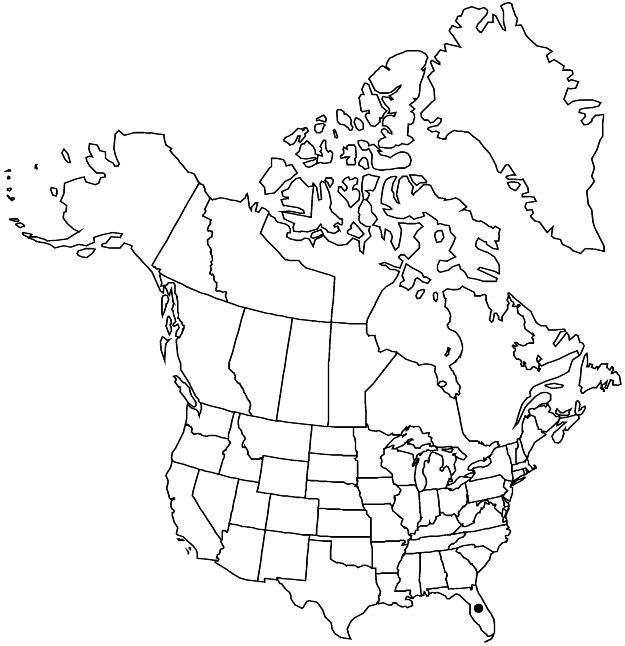Difference between revisions of "Croton glandulosus var. arenicola"
Harvard Pap. Bot. 14: 49. 2009.
Endemic
Basionym: Croton arenicola Small Bull. New York Bot. Gard. 3: 428. 1905
FNA>Volume Importer |
imported>Volume Importer |
||
| (One intermediate revision by the same user not shown) | |||
| Line 56: | Line 56: | ||
|publication year=2009 | |publication year=2009 | ||
|special status=Endemic | |special status=Endemic | ||
| − | |source xml=https:// | + | |source xml=https://bitbucket.org/aafc-mbb/fna-data-curation/src/2e0870ddd59836b60bcf96646a41e87ea5a5943a/coarse_grained_fna_xml/V12/V12_403.xml |
|genus=Croton | |genus=Croton | ||
|species=Croton glandulosus | |species=Croton glandulosus | ||
Latest revision as of 19:15, 5 November 2020
Plants 1–2 dm. Stems densely stellate-hairy, hairs appressed, radii equal. Leaves: petiole apical glands sessile, circular when dry, 0.2 mm diam.; blade 0.7–3.5 × 0.5–1.5 cm, length mostly 2 times width or less, firm-thick, marginal teeth rounded, both surfaces densely stellate-hairy; base obscurely 3-veined.
Phenology: Flowering year-round.
Habitat: Beaches, old fields, disturbed sites, sandy waste places.
Elevation: 0–50 m.
Discussion
Variety arenicola is restricted to Miami-Dade, Monroe, and Palm Beach counties. A. M. Ferguson (1901) treated a collection of this variety as Croton betulinus Vahl, but that is a distinct, perennial species from the West Indies.
Selected References
None.
Lower Taxa
None.
